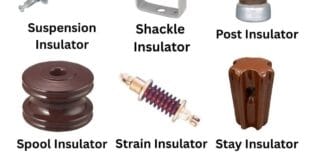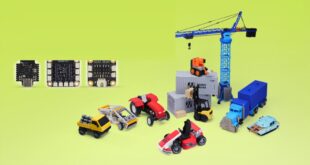Electrical Machines MCQ (Multiple Choice Questions)
1. Electromagnetic torque in rotating electrical machinery is present when ________
a) Both stator and rotor windings carry current
b) Air gap is uniform
c) Stator winding alone carries current
d) Rotor winding alone carries current
View Answer
View Answer
Explanation: Electromagnetic torque = isirdMsr/dθr and if either is or ir = 0, then Te=0.
2. In a rotating electrical machine with 2 poles on the stator and 4 poles on the rotor, spaced equally, the net electromagnetic torque developed is ____________
a) maximum
b) zero or no torque is developed
c) minimum
d) none of the mentioned
View Answer
3. The interaction torque in a rotating electrical machine depends on which of the following components?
a) sinδ, stator field strength, rotor field strength
b) cosδ, torque angle δ, rotor field strength
c) sinδ, torque angle δ, rotor field strength
d) cosδ, stator field strength, rotor field strength
View Answer
4. A consideration of the power losses in electrical machines is essential for which of the following reasons?
a) Operating cost
b) Temperature rise
c) Voltage drops
d) All of the mentioned
View Answer
5. Which of the following can be obtained by the equivalent circuit of an electrical machine?
a) Complete performance characteristics of the machine
b) Temperature coefficients of the machine components
c) Type of protection to be used in the machine
d) Design parameters of the windings
View Answer
6. For an electrical machine with C number of coils and P poles, the distance between the coils connected by an equalizer ring is?
a) C/P
b) C/2
c) 2C/P
d) C/2P
View Answer
7. Which of the following is the primary function of a commutator in a DC machine?
a) To reverse the current direction
b) To maintain constant field flux
c) To regulate the armature speed
d) To reduce the power loss
View Answer
8. In an induction motor, which of the following factors determines the speed of the motor?
a) Frequency of the supply
b) Resistance of the rotor
c) Number of poles in the motor
d) Voltage applied to the stator
View Answer
9. Which of the following is a characteristic of a synchronous motor?
a) It can operate at any speed depending on the load
b) It always operates at synchronous speed
c) It has high starting torque
d) It is self-starting
View Answer
10. Which of the following is the primary advantage of a 3-phase induction motor?
a) Higher starting torque
b) Smooth operation with less vibration
c) High efficiency
d) Simple construction and low cost
View Answer
11. What is the primary function of the stator in a synchronous machine?
a) To generate the magnetic field
b) To provide mechanical power
c) To act as a conductor for the current
d) To control the speed of the rotor
View Answer
12. Which of the following losses is associated with eddy currents in an electrical machine?
a) Copper loss
b) Hysteresis loss
c) Iron loss
d) Mechanical loss
View Answer
13. Which of the following can be obtained by the equivalent circuit of an electrical machine?
a) Complete performance characteristics of the machine
b) Temperature coefficients of the machine components
c) Type of protection to be used in the machine
d) Design parameters of the windings
View Answer
14. In a DC generator, what determines the direction of induced EMF?
a) Direction of the armature current
b) Direction of the magnetic field and motion
c) Speed of rotation of the armature
d) Resistance of the winding
View Answer
15. Why are laminations used in the core of electrical machines?
a) To increase the magnetic flux
b) To reduce eddy current losses
c) To improve mechanical strength
d) To reduce hysteresis losses
View Answer
16. What is the purpose of using a starter in a DC motor?
a) To limit the speed
b) To reduce back EMF
c) To limit the starting current
d) To increase efficiency
View Answer
17. Which of the following is true about the slip in an induction motor?
a) It is always zero at synchronous speed
b) It is negative during motoring mode
c) It increases as the load increases
d) It is independent of load
View Answer
18. What is the primary cause of hysteresis losses in electrical machines?
a) Variable magnetic field in the core
b) Resistance of the windings
c) Harmonics in the supply
d) Mechanical friction
View Answer
19. Which is the most widely used material in the core of the transformer?
a) cold rolled grain oriented sheet steel
b) cold rolled grain steel
c) soft iron
d) steel
View Answer
20. A single phase transformer has emf per turn having 2310/220 V, 50Hz transformer as 13 V. The core area is(in square cm)?
a) 393
b) 277.8
c) 358.92
d) 450.03
View Answer
21. Which of the below estimations require results of both open circuit test and short circuit test?
a) Efficiency
b) Equivalent impedance of one side of the winding
c) Voltage regulation for exact circuit
d) All of the mentioned
View Answer
22. An electro-mechanical energy conversion device is one which converts _______
a) Electrical energy to mechanical energy only
b) Mechanical energy to electrical energy only
c) Electrical to mechanical and mechanical to electrical
d) None of the mentioned
View Answer
23. What is the coupling field used between the electrical and mechanical systems in energy conversion devices?
a) Magnetic field
b) Electric field
c) Magnetic field or Electric field
d) None of the mentioned
View Answer
24. The energy storing capacity of magnetic field is about ________ times greater than that of electric field.
a) 50,000
b) 25,000
c) 10,000
d) 40,000
View Answer
25. The formula for energy stored in the mechanical system of linear motion type is ______
a) 1/2 Jwr2
b) 1/2 mv2
c) 1/2 mv
d) Jwr2
View Answer
26. In an electro-mechanical energy conversion device, which of the following statements are correct regarding the coupling field?
(i) electrical side is associated with emf and current (ii) electrical side is associated with torque and speed (iii) mechanical side is associated with emf and current (iv) mechanical side is associated with torque and speed
a) (i) & (ii)
b) (ii) & (iii)
c) (iii) & (iv)
d) (i) and (iv)
View Answer
27. A coupling magnetic field must react with which of the following statements?
(i) electrical system in order to extract energy from mechanical system (ii) mechanical system in order to extract energy from mechanical system (iii) electrical system in order to extract energy from electrical system (iv) mechanical system in order to extract energy from electrical system (v) electrical or mechanical system for electro-mechanical energy conversion
a) (i), (ii) & (iii)
b) (ii), (iii) & (v)
c) (ii), (iii) & (iv)
d) (ii), (iii) & (v)
View Answer
28. The developed electromagnetic force and/or torque in electromechanical energy conversion system, acts in such a direction that tends to ___________
a) increase the stored energy at constant mmf
b) decrease the stored energy at constant mmf
c) decrease the co-energy at constant mmf
d) increase the stored energy at constant flux
View Answer
29. The developed electromagnetic force and/or torque in electromechanical energy conversion systems, acts in a direction that tends to ___________
(i) increase the co-energy at constant flux (ii) increase the co-energy at constant mmf (iii) decrease the stored energy at constant mmf (iv) decrease the stored energy at constant flux
Which of the above statements are correct?
a) (ii), (iv)
b) (i), (iii)
c) (ii), (iii)
d) (i), (iv)
View Answer
30. A physical system of electromechanical energy conversion, consists of a stationary part creating a magnetic field with electric energy input, and a moving part giving mechanical energy output. If the movable part is kept fixed, the entire electrical energy input will be _______
a) stored in the magnetic field
b) stored in the electric field
c) divided equally between the magnetic and electric fields
d) zero
 Electrical Engineering World Wiring a Brighter Tomorrow!
Electrical Engineering World Wiring a Brighter Tomorrow!



